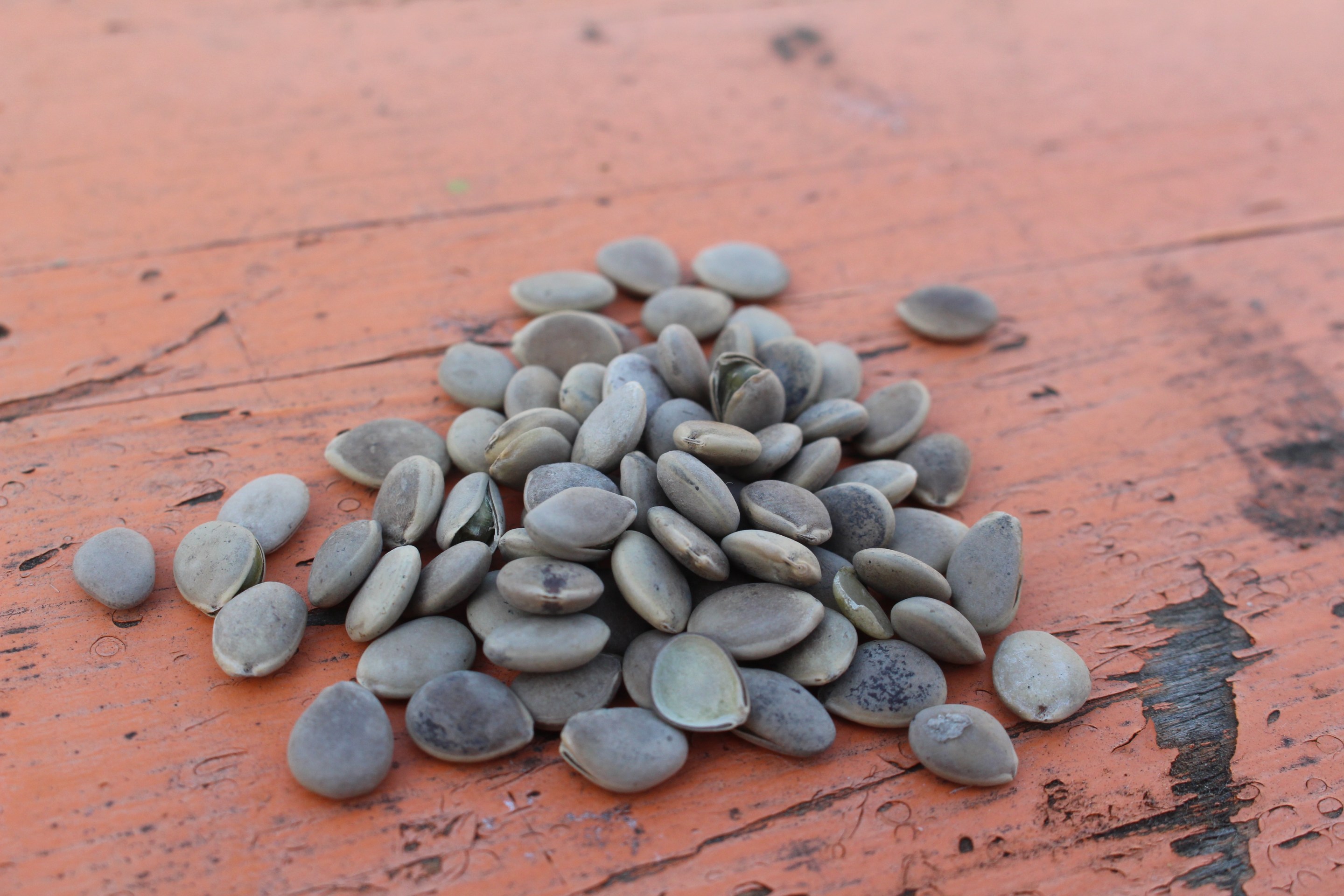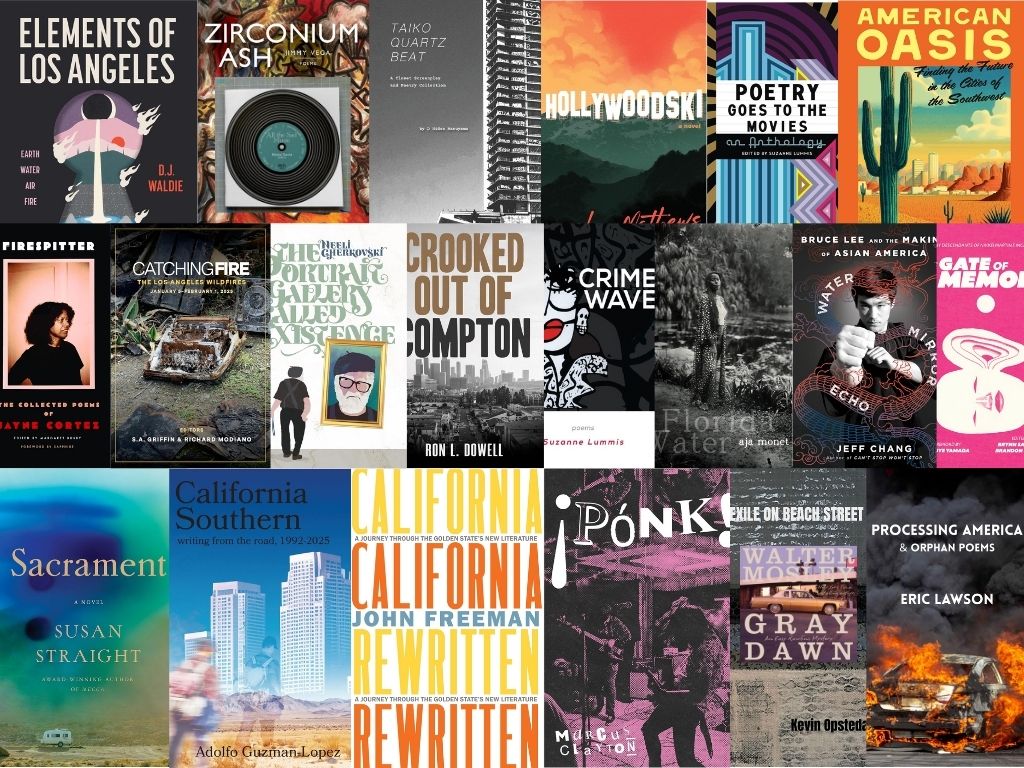It began, as most cousin interactions do nowadays, with a Facebook post.
My prima Chely wanted to know what Americans call acualaistas, little gray seeds about the shape and length of a ladybug. Acualaistas are a beloved snack in Jerez, a municipio (roughly a city-county in the American sense) in the central Mexican state of Zacatecas, where my family is from.
The seeds come from Apodanthera undulata, a fist-sized, foul-smelling pumpkin with a hard rind that grows in the high deserts of the American Southwest and Mexico. They taste like a creamy cross between a pepita and a piñon nut.
But after a Google deep dive, I discovered acualaistas — pronounced AH-KUAH-LAEE-STAHS — have no name in English because the gourd is considered inedible here (its American name is melon loco, which botanical guides claim comes from the idea that anyone who eats its rank flesh must be crazy).
This was a surprise to my cousin and me, because we have enjoyed them our entire lives.
My dad and Chely's mom — mi tía Challo — were born in the rancho of Jomulquillio, within Jerez. Hundreds of people from there live in Southern California, mostly in the San Fernando Valley, Montebello, and Anaheim. They're part of the larger Southern California jerezano diaspora, which numbers in the high thousands.
Some of the community's most famous children? Los Angeles councilmember José Huizar (who was born in the rancho of Los Morales, which separates Jomulquillo from my mom's rancho of El Cargadero), Alberto Bañuelos (of the ever-hip Burritos La Palma), legendary cartoonista Lalo Alcaraz, Chicana author Helena Maria Viramontes, and Jessica Alba, my third cousin once removed.

Every time an aunt or uncle or older cousin visited Jerez, they always made sure to bring some acualaistas back in the suitcases of foodstuffs lugged across the border. So many treats: wheels of chile de árbol-spiked cheese, buckets of quince paste, grocery bags of salted pepitas, and blocks of Fervi, a Mexican-style chocolate imbued with peanut and cinnamon that makes the Ibarra brand seem like ground concrete. Each of them were fabulous and an edible connection back home to the jerezanos in the U.S.
But acualaistas were special, mysterious. The name has no apparent Spanish or Nahuatl origin. Few people in Zacatecas harvest them, because it’s a lot of work — acualaistas need to be leached of the melon loco’s flavor, then nixtamalized, then sun-dried, and finally toasted — for a small yield.
Melon loco (called calabasitas locas in Zacatecas) only grows in the summer, so its seeds were the one treat from Mexico we were never guaranteed—either they were for sale in Jerez’s markets when our families visited, or there weren’t. And there was never a big enough market in el Norte for Latino supermarkets to ever bother and try to import them, let alone stock them. Even today.
My cousin’s query reminded me I hadn’t tasted acualaistas ever since our 95-year-old abuelita returned with a few bags two years ago. My dad and older relatives don’t visit as much anymore because everyone’s up here nowadays.
I usually eat them by the handful, hoping that their supply will never stop.
So I asked my compa Adrián Félix, an assistant professor in the Department of Latin American & Latino Studies at UC Santa Cruz, to get me some acualaistas. He’s also from Jerez, and visited this December for an upcoming book on transnational migrant politics. Félix returned with a small pouch, which slightly disappointed me: I was accustomed to sacks of the stuff, not an amount that wouldn’t even fill up an evening clutch.

“They’re more expensive now,” he explained. “And people don’t eat them as much anymore, so they're harder to get.”
My acualaistas sit on the counter in my kitchen. Any time I need something to chew on, I go to them. I try to limit myself to five a day, try to plop them in my mouth one at a time to savor the stash. They’re best on their own, although I’ve heard of people eating them inside of tacos. The seed itself is delicious, but I always eat them with the cáscara—the shell—because that lends saltiness and crunch.
It's always a cliché in food writing to mention Proust's madeleine, but eating acualaistas take me back to when I was a kid, to Jerez and its ranchos and long trips (driving!) to them and back. How we’d try to stuff as much food as possible into suitcases to take back (acualaistas are not illegal because they're dried) and how my dad always gladhandled his way past any and all migra.
But acualaistas also remind me how those ranchos are mostly empty now.
That’s why rationing is fruitless; I usually eat them by the handful, hoping that their supply will never stop, resigned to the reality that those care packages will come with less and less frequency as the years pass by.







